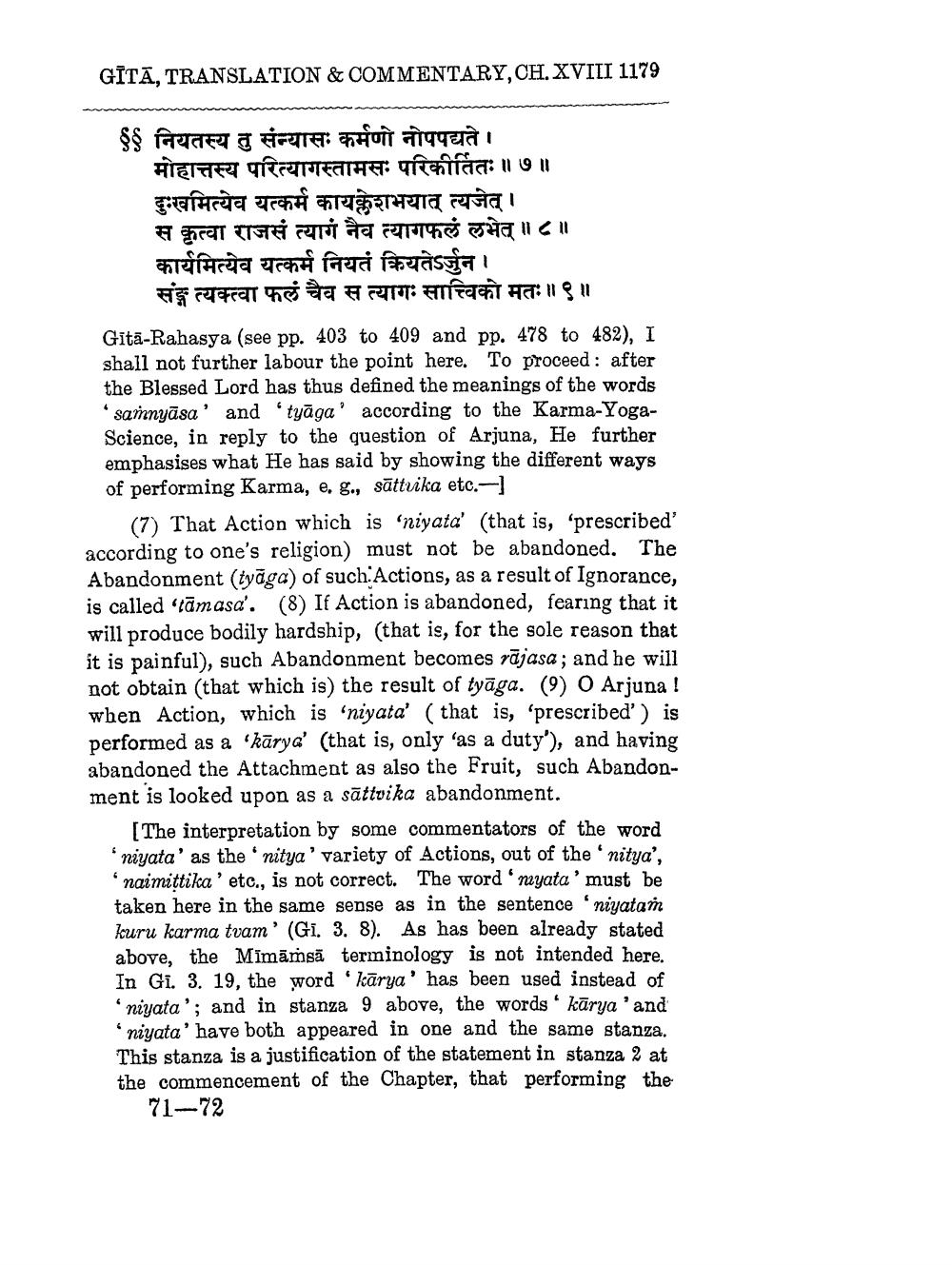________________
GĪTĀ, TRANSLATION & COMMENTARY, CH. XVIII 1179
8 नियतस्य तु संन्यासः कर्मणो नोपपद्यते । मोहात्तस्य परित्यागस्तामसः परिकीर्तितः ॥ ७ ॥ दुःखमित्येव यत्कर्म कायक्लेशभयात् त्यजेत् । स कृत्वा राजसं त्यागं नैव त्यागफलं लभेत् ॥ ८ ॥ कार्यमित्येव यत्कर्म नियतं क्रियतेऽर्जुन । संग त्यक्त्वा फलं चैव स त्यागः सात्त्विको मतः ॥ ९ ॥
•
Gita-Rahasya (see pp. 403 to 409 and pp. 478 to 482), I shall not further labour the point here. To proceed: after the Blessed Lord has thus defined the meanings of the words samnyasa' and 'tyaga' according to the Karma-YogaScience, in reply to the question of Arjuna, He further emphasises what He has said by showing the different ways of performing Karma, e. g., sättvika etc.-]
(7) That Action which is 'niyata' (that is, 'prescribed' according to one's religion) must not be abandoned. The Abandonment (tyaga) of such Actions, as a result of Ignorance, is called 'tamasa. (8) If Action is abandoned, fearing that it will produce bodily hardship, (that is, for the sole reason that it is painful), such Abandonment becomes rajasa; and he will not obtain (that which is) the result of tyaga. (9) O Arjuna! when Action, which is 'niyata' (that is, 'prescribed') is performed as a 'karya' (that is, only 'as a duty'), and having abandoned the Attachment as also the Fruit, such Abandonment is looked upon as a sattvika abandonment.
[The interpretation by some commentators of the word niyata' as the nitya' variety of Actions, out of the ' nitya', 'naimittika' etc., is not correct. The word 'myata' must be taken here in the same sense as in the sentence 'niyatam kuru karma tvam' (Gi. 3. 8). As has been already stated above, the Mimämsä terminology is not intended here. In Gi. 3. 19, the word 'karya' has been used instead of 'niyata'; and in stanza 9 above, the words' kārya' and 'niyata' have both appeared in one and the same stanza. This stanza is a justification of the statement in stanza 2 at the commencement of the Chapter, that performing the 71-72




